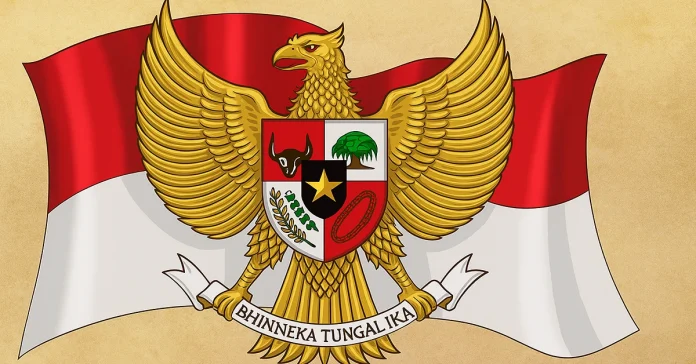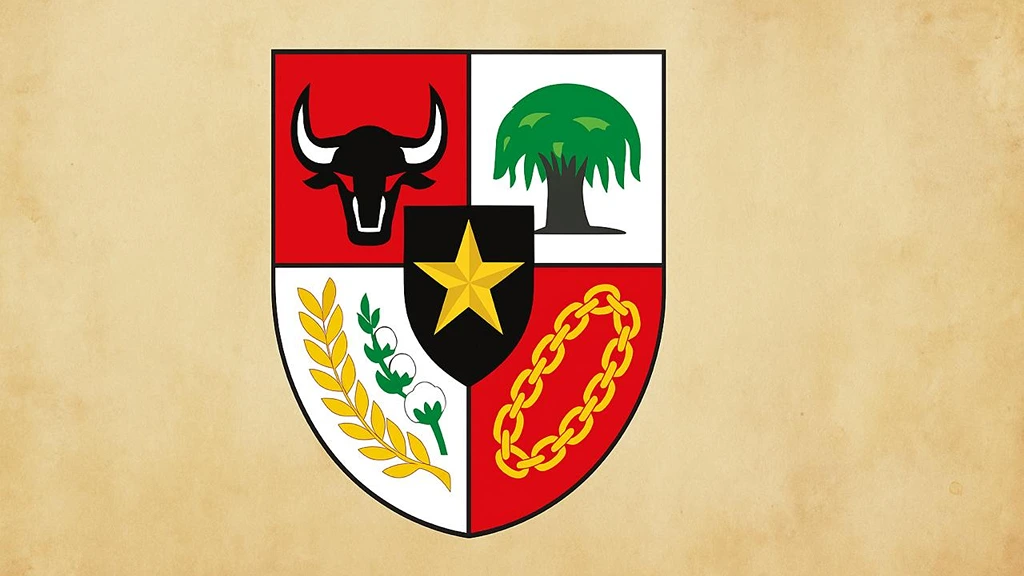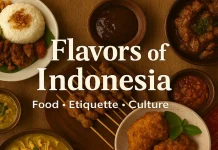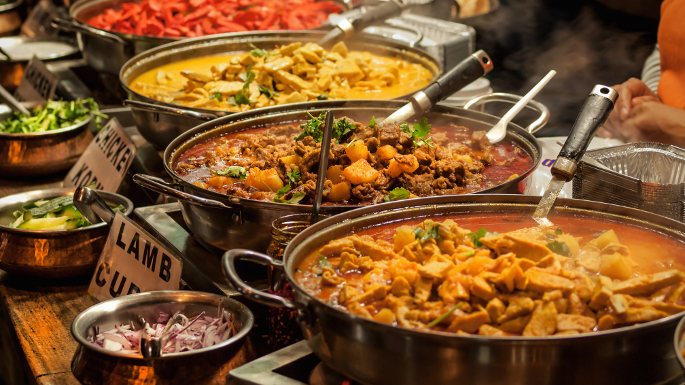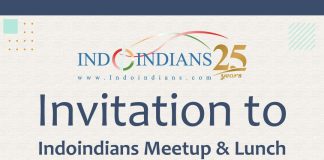Understanding Pancasila and the Garuda: A Shared Cultural Symbol Between Indonesia and India
What Is Pancasila?
Pancasila is the heart and soul of Indonesia — the nation’s set of guiding values. It was introduced by Indonesia’s founding leaders in 1945 and has shaped how people live, work, and treat one another ever since.
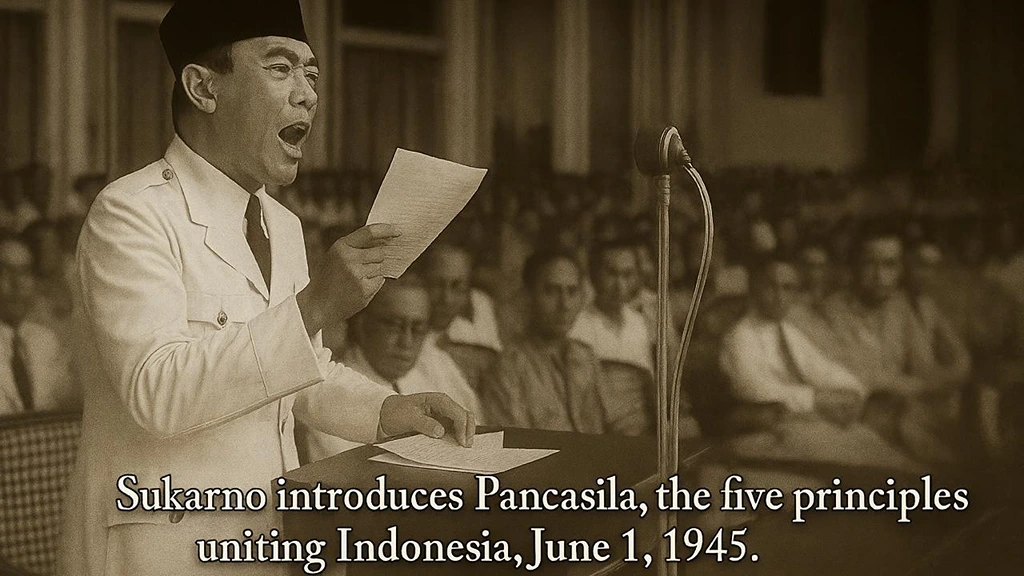
Pancasila teaches faith, humanity, unity, democracy, and fairness. It’s not just a government idea — it’s a way of life. You can see it in how Indonesians respect different religions, help their neighbours, and value harmony over conflict.
The Five Principles and Their Meanings
1. Belief in One Almighty God (Ketuhanan Yang Maha Esa)
Symbol: The Golden Star
The shining star represents faith in one God. The black background behind it shows the universe, reminding everyone that divine light guides all life.
2. Just and Civilized Humanity (Kemanusiaan yang Adil dan Beradab)
Symbol: The Chain
A chain made of round and square links — shows that all people are equal and connected through kindness and respect.
3. The Unity of Indonesia (Persatuan Indonesia)
Symbol: The Banyan Tree
Like a banyan tree with countless roots and branches, Indonesia is one strong nation made up of many different cultures and islands.
4. Democracy Guided by Wisdom (Kerakyatan yang Dipimpin oleh Hikmat Kebijaksanaan dalam Permusyawaratan/Perwakilan)
Symbol: The Bull’s Head
The bull stands for community spirit and strength. Indonesians believe real democracy means listening, discussing, and deciding together — not fighting to win.
5. Social Justice for All Indonesians (Keadilan Sosial bagi Seluruh Rakyat Indonesia)
Symbol: Rice and Cotton
Rice and cotton represent food and clothing — the basics of life. They remind everyone that true progress happens only when everyone shares in the nation’s prosperity.
The Garuda Pancasila: More Than a National Emblem
The Garuda Pancasila, adopted in 1950, is Indonesia’s national emblem — a majestic golden bird symbolizing strength, courage, and unity.
On its chest is a shield showing the five Pancasila symbols. But even its feathers carry hidden meaning:
● 17 feathers on each wing
● 8 on the tail
● 19 below the shield
● 45 on the neck
Put them together and you get 17 August 1945, Indonesia’s Independence Day.
Below the Garuda’s claws is a ribbon that reads Bhinneka Tunggal Ika, which means Unity in Diversity.
The phrase comes from an old Javanese poem and captures what Indonesia is all about — many people, one nation.
From Ancient India to Modern Indonesia
Long before Indonesia became a nation, the Garuda was already famous in Indian mythology as the bird that carries Lord Vishnu, the protector of the universe. In Hindu stories, Garuda stands for freedom, courage, and the fight against ignorance — a creature that soars above all limits.
As Indian traders and teachers brought their culture to the islands centuries ago, the Garuda found a new home in Indonesia. Ancient kingdoms like Srivijaya and Majapahit used it as a royal symbol of protection and power.
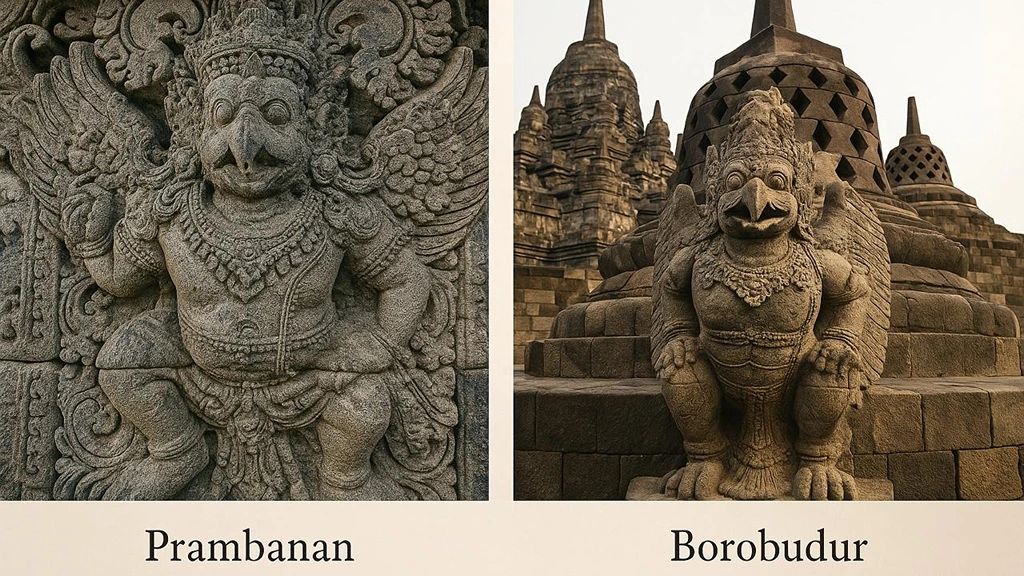
You can still see Garuda carvings in temples like Prambanan and Borobudur, standing proudly as proof of the deep cultural exchange between India and Indonesia.
A Bridge Between Two Civilizations
The Garuda connects India and Indonesia through shared ideas — bravery, wisdom, and devotion.
In India, it’s divine. In Indonesia, it’s national. But in both, it represents the same spirit — freedom, righteousness, and the triumph of light over darkness.
By choosing the Garuda as its emblem, Indonesia honoured its ancient ties with India while giving the symbol a modern meaning — strength, unity, and independence.
Fun Facts:
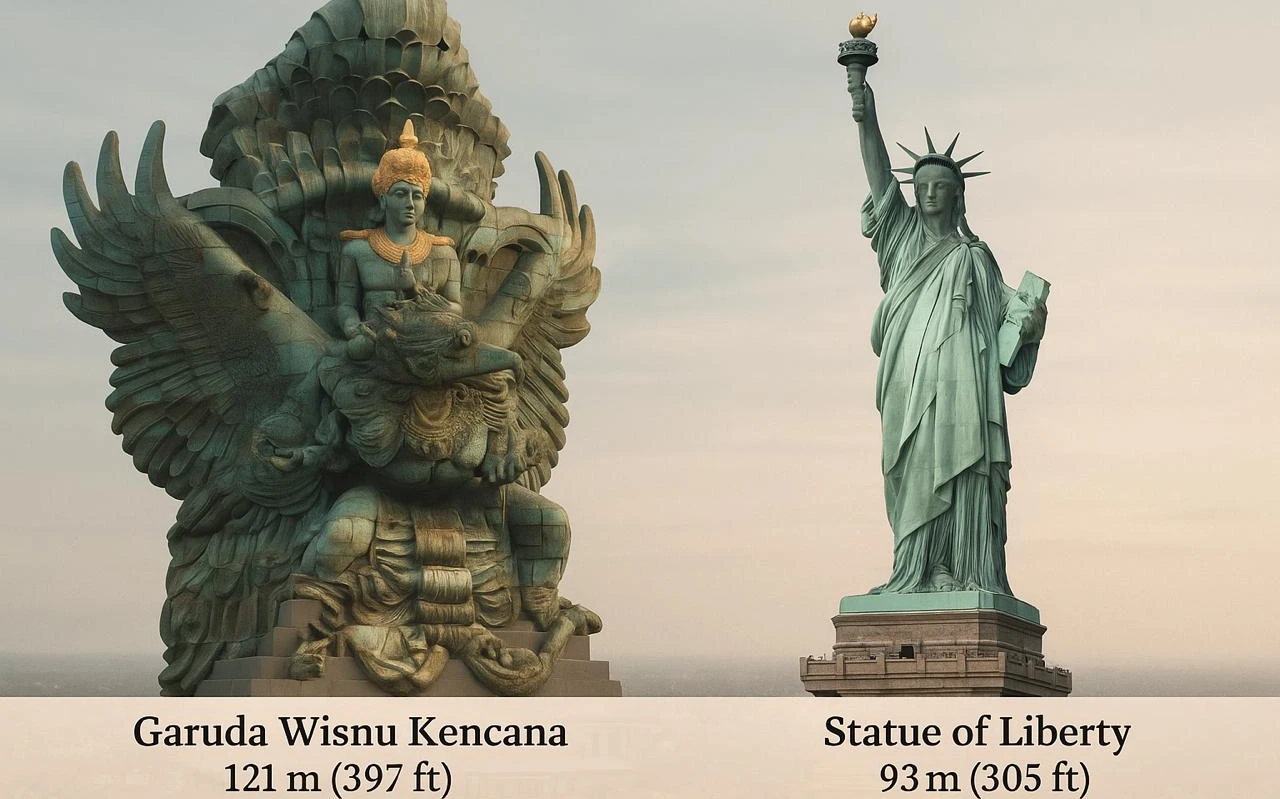
● Garuda Indonesia, the national airline, takes its name from the same mythical bird — carrying the nation’s pride around the world.
● The giant Garuda Wisnu Kencana statue in Bali stands taller than the Statue of Liberty. It shows Lord Vishnu riding Garuda, symbolising balance between power and peace.
Conclusion
Pancasila gives Indonesia its moral direction. The Garuda gives it wings.
Together, they tell the story of a nation that values faith, justice, and unity — and one that proudly carries traces of its ancient connections with India.
Both countries, though miles apart, share the same timeless lesson:
True strength comes from harmony — not from being the same, but from standing together in diversity.
by Bhavish Adwani


